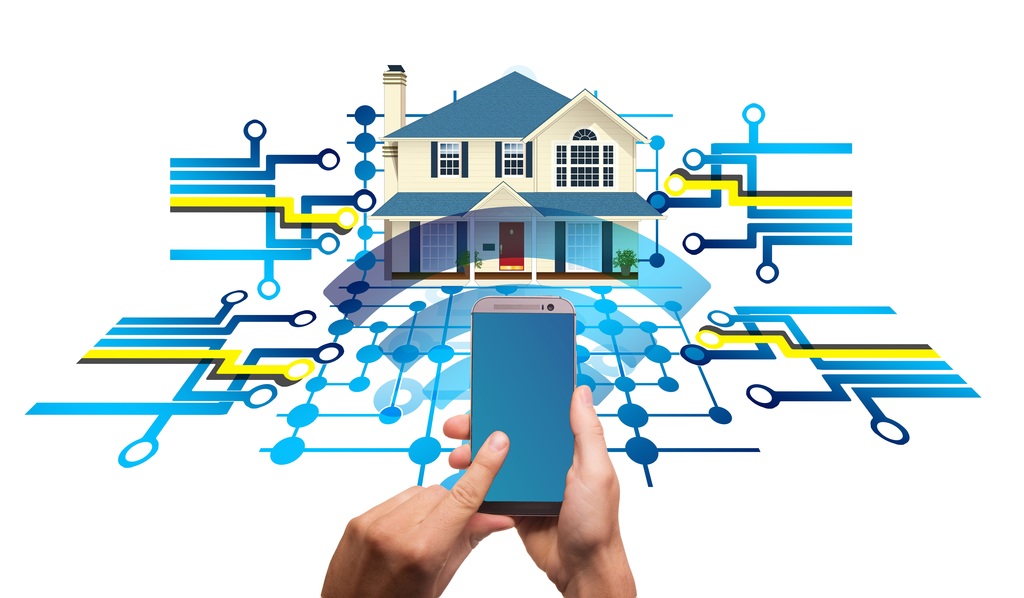
Brian Sims
Editor

Brian Sims
Editor
Incorporating emerging technology into our industry is more than making buildings smart, it is also about making them safe, says Ray Puttock.
ONE OF the fastest moving changes we have seen in recent years is the adoption of “Smart” devices and this, along with the Internet of Things (IOT) has fast become the “must have” technology, whatever the industry.
The question is, is this a smart move when looking at Fire and Security products and their associated services or, simply another possible link in the chain adding vulnerability?
To clarify, the IOT is, and this is the Wikipedia description: (IOT) is the network of devices such as vehicles, and home appliances that contain electronics, software, sensors, actuators and connectivity, which allows these things to connect, interact and exchange data.
The IOT involves extending Internet connectivity beyond standard devices, such as desktops, laptops, smartphones and tablets, to any range of traditionally dumb or non-internet-enabled physical devices and everyday objects. Embedded with technology, these devices can communicate and interact over the Internet, and they can be remotely monitored and controlled.
It is important to separate the idea of IOT from Smart buildings, when looking at life safety, as the principles may apply but there must be a slightly different approach to maintaining the security of these systems whilst adopting the philosophy.
Advancing technology is all about evolution and not revolution, taking the best that it offers without compromising for the sake of it, just to have the latest and greatest.
An excellent example of this is the use of voice activation and speech recognition, which has finally come of age. Who can forget those early software packages where you spent hours reading passages from novels, in an attempt to get it to learn your voice, your accent and the inflections that are specific to each speaker? After much time going through this process, and always, the results were mixed to say the least and much time was spent correcting the “mistakes” which effectively meant more time.
The outcome was that it was still quicker and easier to use a keyboard and mouse. Yet, thinking about it at some earlier time, we were debating the advantages of using a keyboard and mouse, after all, the pen had been successful for years! The upshot is that with voice activation, nearly all of us now have a voice-activated hub in our home, which costs less than a £100 yet, delivers everything it promises. It answers questions as well as obeying instructions and is not challenged whatever the accent!
Applying this to our industry means, we need to incorporate emerging technology for the greater good and not just because we can. Just imagine, a voice activated fire panel!
However, if we look at some of the newer features, which, are being assimilated into safety systems, some just make immediate sense. Joining up the dots and connecting building systems so they communicate makes this not just a smart move, but also a really safe one.
Intelligent decisions
Smart buildings is now an accepted description of just this, connecting services together with safety systems as well environmental controls as, after all, they have a halo effect on the overall building and occupants. What better way of anticipating a heating failure or electrical overload, than having the information automatically routed to a panel that can then make intelligent decisions, as well as communicating any such event in real time, so that we humans can then make the ultimate judgement and take the appropriate action.
The key to success, is a commonality of language or protocol and whilst smart interoperability has been around for a number of years, this has been at the very top end of the spectrum, reserved for the likes of corporate headquarters. Such systems could not only monitor safety and security, but control building services such as heating and ventilation and therefore, offering environmental advantages. This was however, an expensive road to go down and, in the early days a challenging one. The movement to interoperability confronted numerous companies, many of which have been long time competitors, with a dilemma, work towards a smart building approach or lose ground as customers adopt it.
As with all early adopters of technology, costs were higher, as technology costs money to develop, but more adopters and the increase in awareness and desirability does mean more affordable solutions are found, as this demand increases.
We see today that this technology has indeed flowed down to almost any building, as reducing costs, along with ease of implementation and communication that is much more robust, means it is more affordable, much like the earlier analogy of voice recognition.
Combine the lower entry costs, with the increased safety and you have a smart solution.
In a bid to meet demands, some developers have looked to a simpler approach to interoperability – no less effective but perhaps less complex.
Let us take the example of a small hotel with perhaps 8-10 rooms, a small business with lots of ongoing costs in a climate of financial vagueness (let’s not mention the “B” word”). With a transient clientele, and high safety expectations, a well-designed and reliable fire system is required to meet today’s legislation requirements and, provide protection, but why not use the system to give more information?
Using technology that is tried and tested, and ensuring that the fire system always take priority, the infrastructure that covers the building can provide a platform for other safety devices. For example, a wireless based system using 868MHz, which is the widely accepted fire and safety operating frequency, can be used to support supplementary equipment. The addition of wireless door holders, is a simple instance of integration, but what about connecting the heating boiler via a wireless module/interface?
This can then send a simple signal, rather than merely illuminate a localised light or buzzer unit – pointless in a basement, as these are usually unmanned or little used and it could be some time before the failure is discovered. Not necessarily a life threatening issue but inconvenient, especially in the hotel scenario above.
This activation signal can then be interpreted by the control panel, independently, but secondary to the fire detection devices, and then transmitted onwards to meet local requirements. Again, using tried, tested and secure communication paths, to transmit across the internet; this information can then be routed directly to a heating maintenance company for action.
Additionally, texts and/or emails can be automatically generated and sent to building owners or management with pertinent information, all in real time and ensuring best practice around safety is driven upwards.
Smart approach
Not just heating, what about flood alarms or CO alarms – applying the same methodology gives us this joined up approach, the smart approach.
The use of smart can also refer to the use of data, as it is important with fire safety to have a record and history of what may or may not have happened to the fire system, since it was installed. The frantic filling in of the weekly test, prior to a maintenance visit, adds nothing to safety, yet a cloud based audit trail would provide detailed and concise information precisely time stamped and available at a click.
This data cannot be changed or modified and it is of course, held securely and, in an encrypted format. This ensures that there is always a concise documented history, which is both true and accurate, adding to site safety, as maintenance information is truly transparent. No more printouts in the panel or USB sticks, with differing information floating around unsecured.
Applying this to a fire situation, which could occur at some future date, investigators would be able to explore, in fine detail, the entire history of the system.
This advancement of interoperability allows innovation to flourish. Opening up new opportunities as technological evolution continues with development teams across the industry working to meet customer demands for smarter solutions that are effective, useful, cost effective and above all empowering.
Smart Buildings may be an overused expression, but people do know what it means, and building users are now more confident in their safety, as well as feeling good about sustainability and the environment.
Smart cannot be ignored as more and more users demand interoperability, at all levels and everyday it becomes more attainable and more affordable. It delivers real advantages and increased safety, which is the bottom line, after all that’s what our industry is all about, decreasing and minimising risk, increasing visibility and ultimately saving lives and property.
Now let us think about “Smart Motorways”, anyone got any comments or thoughts, as I really have no idea?
Ray Puttock is vertical sales and marketing director at EMS Ltd. For more information, visit www.emsgroup.co.uk



Technology House
Sea Street
HERNE BAY
CT6 8JZ
UNITED KINGDOM
01227 36 9570